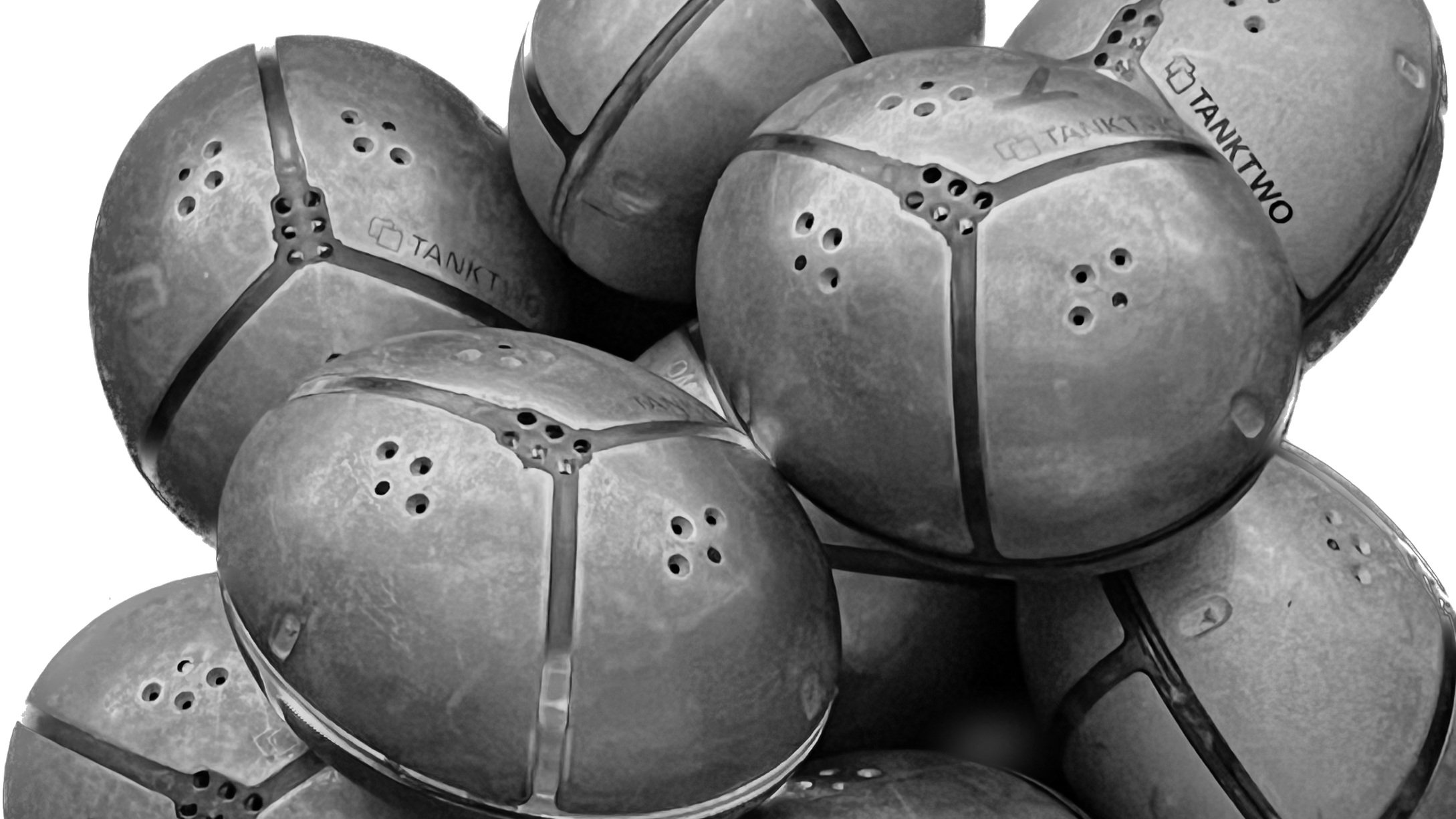
Tanktwo Patented Technologies
Our patented technologies are designed to position Tanktwo as the only global provider of a complex ecosystem that bridges electrification, mobility, and data analytics — by introducing a paradigm shift in electric mobility and energy storage that will have significant environmental, social-economical, and geopolitical impacts.
While our battery solutions can take on any shape and form, the OG — our string cell system — best illustrates how far our technology can push the boundary of electrification.
The system consists of a large number of individual battery units (smaller than an egg) called String Cells, which are “poured” into a tank and self-organize to achieve maximum packing density. Essentially, we treat them like “very large molecules” — collectively they behave like a conventional liquid fuel (i.e., gasoline) and can be handled as such using existing infrastructure and operational processes.
In the tank, the String Cells form electric circuits and act as a single battery pack. When they run out of charge, they can be swapped out in just minutes to eliminate lengthy (and costly) charge time that keeps commercial vehicles idle (and therefore, not generating revenue.)
Our unique solution combines asset optimization with utilities to make electrification in transportation viable at a large commercial scale — which will be in high demand thanks to the convergence of environmental concerns, geopolitical instability, and regulations.
Our Patents
Tanktwo’s intellectual property (IP) is protected by 28 individual patents belonging to seven patent families, filed in the US, EU, and China:
35420 Smartcell (String Cell) — the core of the Tanktwo system, these cells measure 42mm long and weigh 50g, with the same capacity as the most common 18650 cells. Each cell contains a microprocessor that allows the user to control its behaviors and collect data to optimize cost efficiency.
String Tank — the container that holds the String Cells, which can be of any size or shape. Using IoT protocols, the String Cells and the String Tank self-organize to form optimal cell connection circuits (Strings) to achieve the desired power output.
Liquefaction and Analytics — based on the concepts of random packing, bulk solid handing, and pneumatic conveying, this technology makes electrification viable at a commercial scale by handling String Cells as a liquid fuel using existing infrastructure and operational processes.
Jelly Roll — allows the highest amount of battery materials to be packed into the String Cells’ ellipsoidal shape to maximize random packing density, which lowers handling cost so the String Cells can be treated as a liquid fuel cost-efficiently.
Intrinsic Safety — multiple safety features built within the String Cells and the system allow us to isolate and remove problematic cells before they become a safety hazard so we can effectively prevent overheating and lithium fires.
Battery Security — makes battery licensing possible by controlling how/when/where the batteries can be used. This allows providers to create business plans and tiered pricing structures that can respond nimbly to market demands — making “power-as-a-service” a viable business model.
Besides our own ecosystem, the IPs also cover areas that can be licensed to other companies for battery applications in other equipment (e.g., military, medical.)
Unique selling points
The secured IPs are the foundation of our unique selling points (USPs.) Some of them enable asset optimization to lower cost by 30-50% compared to conventional battery technology while others allow users to optimize performance, reduce life cycle cost, and enhance battery safety of the individual String Cells.
Flexible battery pack size: our String Cell and liquefaction technology make it possible for any vehicle to be electrified while carrying just the right amount of power to eliminate excessive weight.
100% charge in minutes: our liquefaction technology allows hyper-fast cell swapping, which can attain a 100% charge in 2-3 minutes (compared to 40 minutes for an 80% charge using a supercharger.)
Cost-efficient charging stations: our hyperchargers utilize proven bulk material handling systems to remove and refill String Cells. They can process more vehicles per hour and cost less than 20% of today’s Superchargers.
24/7 fleet operation: the hyper-fast charging/cell swap time makes it possible to operate vehicles 24/7, making the electrification of commercial fleets viable economically and operationally. In fact, these vehicles can be on the road for 23 hours and 50 minutes per day.
Simultaneous mobility and energy storage application: the String Cells can be used to operate vehicles and as energy storage devices. The dual utilization role enhances asset optimization, making our technology the only mobility battery solution that works seamlessly with existing utilities and renewable energy sources such as wind and solar.
Long cell life expectancy: the String Cells can be utilized at 100% of their maximum life expectancy, independent of other cells’ performance. As a Cell’s energy density decreases over time, it can be used in different applications to optimize its value.
Low cell manufacturing cost: our String Cells can utilize any battery chemistry and be mix-and-matched to work together efficiently. This eliminates the need for high-cost manufacturing control without compromising optimal power delivery.
Increased vehicle life expectancy: instead of replacing an entire vehicle when specific battery chemistry or technology becomes obsolete, users can simply switch out old String Cells with new ones without having to replace the vehicles.
Intrinsic safety: from String Cells to battery packs, our system is designed with multiple safety features to ensure that dangerous and costly lithium battery fires don’t occur.
Our patented technologies position our partners, investors, and customers in the right place and at the right time to benefit from the convergence of influences in electrification, mobility, and data analytics with minimal risks.
